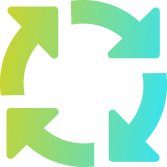12th April 2023
Healthcare IT (Information Technology) refers to the use of technology to manage and improve healthcare services. This includes a variety of tools and systems that help healthcare providers store, retrieve, share, and analyze patient information.
Some common examples of healthcare IT include electronic health records (EHRs), telemedicine, health information exchanges (HIEs), clinical decision support systems, and patient portals. These tools can help streamline communication between healthcare providers, improve patient outcomes, and reduce costs.
Electronic health records, in particular, are a crucial component of healthcare IT. These digital systems allow healthcare providers to access and update patient information in real time, improving the accuracy and accessibility of patient data. This can lead to better care coordination and improved patient outcomes.
Telemedicine is another important aspect of healthcare IT. Telemedicine allows patients to access healthcare services remotely, through video or phone consultations. This can be particularly useful for patients who live in rural or remote areas, or who have mobility issues.
Healthcare IT is an evolving field, and new technologies and tools are constantly being developed to improve the quality and efficiency of healthcare services. As the demand for healthcare services continues to grow, healthcare IT will become increasingly important in managing patient care and improving outcomes.
The Global Healthcare IT Market was valued at 392.30 billion USD, and it is projected to reach 1720.84 billion USD by 2030 with a CAGR of 20.3% in the forecast period of 2023-2030. The healthcare IT market is being driven by several factors, including:
Growing demand for healthcare services: As the global population continues to grow and age, the demand for healthcare services is increasing. Healthcare IT can help providers meet this demand by improving the efficiency and effectiveness of healthcare delivery.
Advancements in technology: The healthcare IT market is constantly evolving, with new technologies and tools being developed to improve patient care. For example, the increasing adoption of artificial intelligence (AI) and machine learning (ML) is helping providers analyze patient data and make more informed treatment decisions.
Need to reduce healthcare costs: Healthcare IT can help reduce the cost of healthcare services by improving efficiency and reducing waste. For example, electronic health records (EHRs) can help providers avoid duplicating tests or procedures, leading to cost savings.
Increasing focus on patient outcomes: Healthcare providers are increasingly focused on improving patient outcomes, and healthcare IT can help facilitate this by providing more accurate and timely information about patient health.
Government regulations: Many governments around the world are implementing regulations to encourage the adoption of healthcare IT, such as the requirement to use electronic health records. This is driving growth in the healthcare IT market as providers seek to comply with these regulations.
The key market players in the Global healthcare IT market are Optum, Cerner, Cognizant, Change Healthcare, Philips Healthcare, Epic Systems, Dell Technologies, Allscripts, GE Healthcare, IBM, athenahealth, eClinicalWorks, Oracle Corporation, Conduent, Infor, Tata Consultancy Services, Wipro Limited, Conifer Health, Nuance, 3M, Inovalon, InterSystems, Carestream Health, Orion Health, Practice Fusion, and SAS Institute.
Sharecare introduced Smart Omix in September 2022, a patented digital clinical research solution that allows for the design of digital biomarkers and the collecting of real-world data through mobile research projects. The features of Smart Omix are critical in expanding clinical research's relevance, equity, and data integrity throughout the healthcare continuum.
Cerner and the Hazelden Betty Ford Foundation collaborated in June 2022. By assigning patients with digital content, such as therapeutic education, exercises, and workshops, accessible via the EHR's patient portal, the Oracle Cerner EHR and Xealth's digital therapeutic distribution platform make it simpler for Hazelden Betty Ford clinicians to tailor patient care.
The healthcare IT market can be segmented based on several factors, such as product type, and end-user.
Based on product type, Healthcare payer solutions, healthcare provider solutions, and HCIT outsourcing services are the several product categories within the global healthcare IT market. Clinical and non-clinical solutions for healthcare providers are separated into two categories. Due to the increase in the adoption of electronic health records (EHR) and other hospital information systems by healthcare providers, it is projected that the segment for healthcare provider solutions will expand the fastest over the analysis period.
Healthcare payers and providers are the two categories into which the global healthcare IT market is divided based on end users. The hospitals, itinerant care centers, individual and imaging centers, apothecaries, and others make up the healthcare provider section. Public payers and private payers make up the remaining segments of healthcare payers. During the analysis period, the healthcare provider segment is most likely to experience the next-fastest growth. Moreover, the healthcare payers segment is anticipated to develop rapidly through 2030.
Due to the three major Asia-Pacific nations that are taken into account in the report—India, Japan, China, and the Rest of Asia-Pacific—the region is anticipated to continue its dominance during the projected period. North America, on the other hand, is anticipated to increase at the fastest rate during the projection period. Some of the key reasons driving the growth of the North American healthcare IT market include rising purchasing power, better access to digital technologies, higher internet penetration, and the growing adoption of smart devices.
The healthcare IT market is a rapidly growing industry that focuses on using technology to improve healthcare delivery and patient outcomes. The market includes a wide range of products and services, such as electronic health records (EHRs), telemedicine, healthcare analytics, patient engagement solutions, and healthcare management systems. The healthcare IT market is expected to continue its rapid growth in the coming years, driven by increasing healthcare expenditure, growing demand for healthcare services, advancements in technology, and the need to reduce healthcare costs. As healthcare providers increasingly adopt technology to improve patient care and reduce costs, healthcare IT will become increasingly important in managing patient care and improving outcomes.

